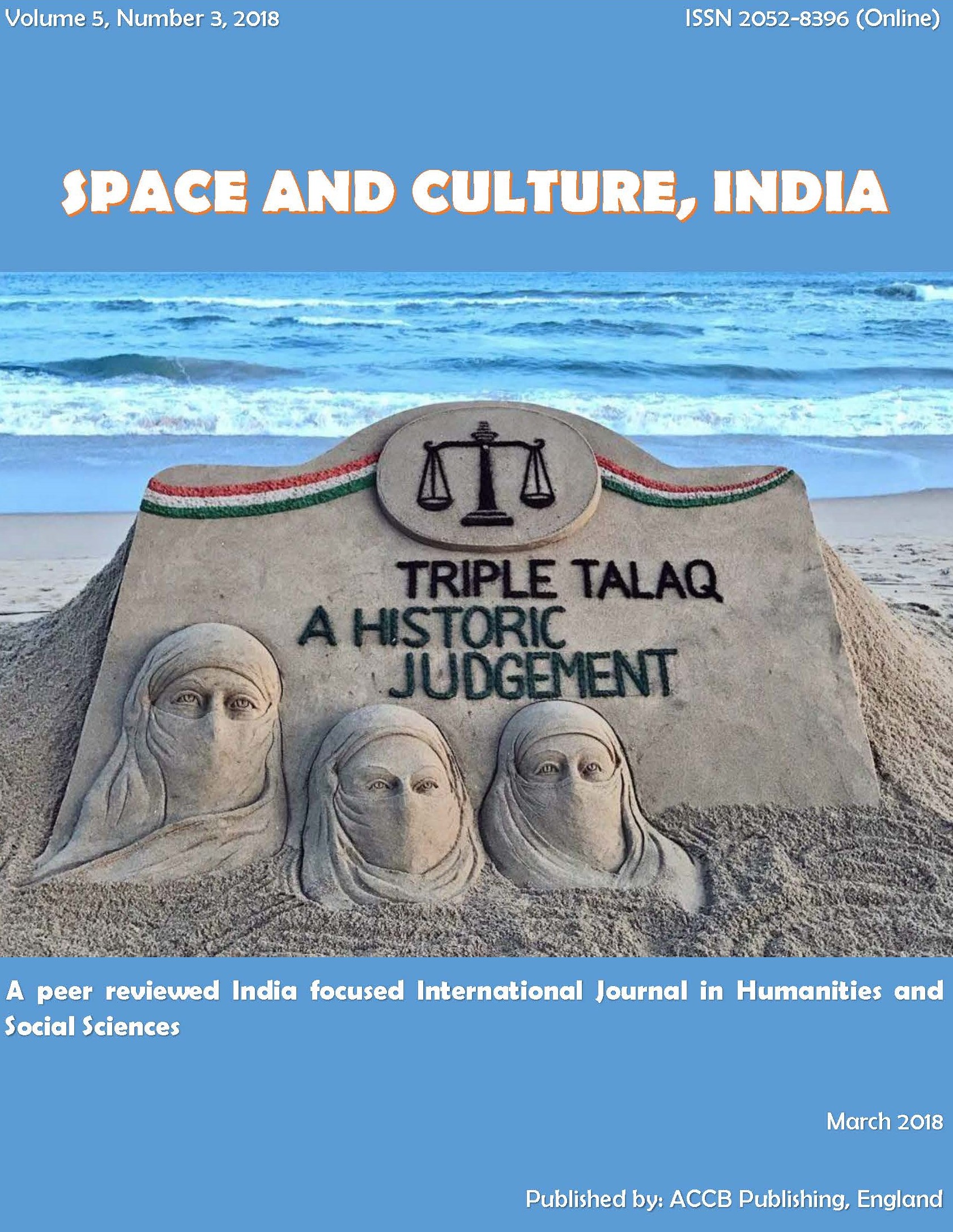Ayodhya: The Imageability and Perceptions of Cultural Landscapes

Abstract
Most of the visitors (pilgrims in the majority) and the dwellers (mostly Hindus) perform some sorts of rituals at varying degrees and become involved in the religious activities to gain solace or soul healing. Of course, as sidetrack visitors also perform other activities of recreation and side-show. However, these are the marginal activities. It is obviously noted that personality of pilgrims and dwellers in the context of economic, social, cultural, job status, and perspective of life, has a direct effect on the nature of environmental sensitivity to its sacred landscapes and mythologies that support and make them alive. Ongoing rituals, continuous performances of Ramalila in the evening, pilgrimages and auspicious glimpses to the divine images, and associated happenings together make the whole are a part of the sacred environment. These are categorised within the frame of responsive perception, testing Kevin Lynch’s scale of imageability represented with the five elements, viz. path, edge, node, district, and landmark. The perceptual survey of dwellers and pilgrims are codified into a composite cognitive map that reflects the generalised images of various behavioural attributes that fit the cultural and natural landscapes of the city; this is similar to other holy cities of north India like Varanasi, Mathura, and Chitrakut.
Keywords
Ayodhya, cognitive map, dwellers, imageability, perception, pilgrims, the Sarayu river, symbols.
References
- Carmona, Matthew et al. (2010). Public Places-Urban Spaces. The Dimensions of Urban Design. 2nd edition. Architectural Press- Taylor & Francis, Oxford.
- de Lange, Michiel (2009, May 8). Review: Kevin Lynch – The Image of the City. The Mobile City. http://themobilecity.nl/2009/05/08/review-kevin-lynch-the-image-of-the-city/
- Denny, Fredrick M. (1991). Editor’s Preface. In Meyer, Jeffrey E., The Dragons of Tiananmen: Beijing as Sacred City. University of South Carolina Press, Columbia, pp. ix-x.
- Eisler, Anna D.; Eisler, Hannes and Yoshida, Mitsuo (2003). Perception of Human Ecology, Cross-cultural and Gender Comparisons. Journal of Environmental Psychology, 23 (1), March, pp. 89-101. DOI: https://doi.org/10.1016/S0272-4944(02)00083-X
- Gobster, Paul H.; Falmer, James F. and Crystal, Joseph (2003). Erwin H. Zube 1931-2002, The significance and impact of his contributions to Environment-Behavior Studies. Environment & Behavior, 35 (2), March, pp. 165-186. DOI: https://doi.org/10.1177/0013916502250131
- Golledge, Reginald G. (1987). Environmental cognition. In Stokols, Daniel and Altman, Irwin (eds.) Handbook of Environmental Psychology [2 vols.]. John Wiley & Sons, New York, vol. I, pp. 131 – 174.
- Halperin, William C. (1988). Current topics in behavioural modelling of consumer choice; in, Reginald G. Golledge and Harry Timmermans, eds. Behavioural Modelling in Geography and Planning. Croom Helm Ltd. Pub., London, pp. 1-26.
- Kumar, Sarvesh and Singh, Rana P.B. (2013). Waterfront Cultural Landscape of Ayodhya (India), an Ancient Sacred Abode of Gods. South Asian Affairs (ISSN 1349-8851; Gifu Women’s University, Gifu, Japan), 9, pp. 6-17.
- Kumar, Sarvesh and Singh, Rana P.B. (2017). Ayodhya (India): a study of Ritual Landscapes. Practicing Geographer (ISSN: 0975-3850; Foundation of Practicing Geographers, Kolkata), 21 (2), Winter, pp. 71-84.
- Lynch, Kevin (1960). The Image of the City. MIT Press, Cambridge, MA.
- Lynch, Kevin (1976). ‘Foreword’. In Moore, Gary T. and Golledge, Reginald G. (eds.) Environmental Knowing. Dowden, Hutchinson & Ross, Stroudsburg, PA, pp. v - viii.
- Lynch, Kevin (1984). Reconsidering the Image of the City. In Rodwin, Llyod and Hollister, Robert M. (eds.) Cities of the Mind. Plenum Press, New York, pp. 151 - 161 DOI: https://doi.org/10.1007/978-1-4757-9697-1_9
- Porteous, J. Douglas (1996). Bodyscape: the Body-landscape metaphor. Canadian Geographer, 30 (1), pp. 2-12. DOI: https://doi.org/10.1111/j.1541-0064.1986.tb01020.x
- Rana, Pravin S. and Singh, Rana P.B. (2011). Perceptions and Images of Tourists and Pilgrims in Banaras. In Singh, Rana P.B. (ed.) Holy Places and Pilgrimages: Essays on India. Planet Earth & Cultural Understanding Series, Pub. 8. Shubhi Publications, New Delhi, pp 165-206.
- Rapoport, Amos (1990). The Meaning of Built Environment. University of Arizona Press, Tucson.
- Rodwin, Lloyd and Hollister, Robert M., eds. (1984). Cities of the Mind. Images and Themes of the City in the Social Sciences. Plenum Press, New York. DOI: https://doi.org/10.1007/978-1-4757-9697-1
- Singh R.L. and Singh, Rana (1980). Urban landscape of Varanasi, a cultural synthesis. National Geographical Journal of India (N.G.S.I., Varanasi), 26 (3-4), pp. 113-123.
- Singh, Rana P.B. (1988). The Image of Varanasi: Sacrality and Perceptual World. National Geographical Journal of India, 34 (1) March, pp. 01 32.
- Singh, Rana P.B. (1994). Sacred Geometry of India’s Holy City, Varanasi: Kashi as Cosmogram. National Geographical Journal of India, 40, pp. 189-216.
- Singh, Rana P.B. (2002). Towards the Pilgrimage Archetype. Panchakrosi Yatra of Banaras. Pilgrimage & Cosmology Series: 3. Indica Books, Varanasi.
- Singh, Rana P.B. (2009). Cosmic Order and Cultural Astronomy: Sacred Cities of India. Planet Earth & Cultural Understanding: Series Pub. 4. Cambridge Scholars Publishing, Newcastle upon Tyne. U.K.
- Singh, Rana P.B. and Shahi, R.P. (1988). The Image of the City: Case of Deoria Town, India. National Geographical Journal of India, 34 (3), pp. 187 - 206.
- Singh, Rana P. B. and Dubey, D.P. (1988). Mathura Mandala: Territory and Sacrality. In T.P. Verma, et al. (eds.) Yuga-Yugina Braj (A History of Braj Region). B. I. S. S., Varanasi, Pub. 6, pp. 189-200.
- Tolman, E.C. (1932). Purposive Behavior in Animals and Men. Appleton-Century-Crofts, New York.
- Trowbridge, C.C. (1913). On fundamental methods of orientation and imaginary maps. Science, 36 (no. 90), Dec. 9, pp. 888 -897. DOI: https://doi.org/10.1126/science.38.990.888
- Tuan, Yi-Fu (1977). Space and Place. The Perspective of Experience. University of Minnesota Press, Minneapolis.
- Tuan, Yi-Fu (1986). Stranger and strangeness. Geographical Review, 76 (1), pp. 10-19. DOI: https://doi.org/10.2307/214781